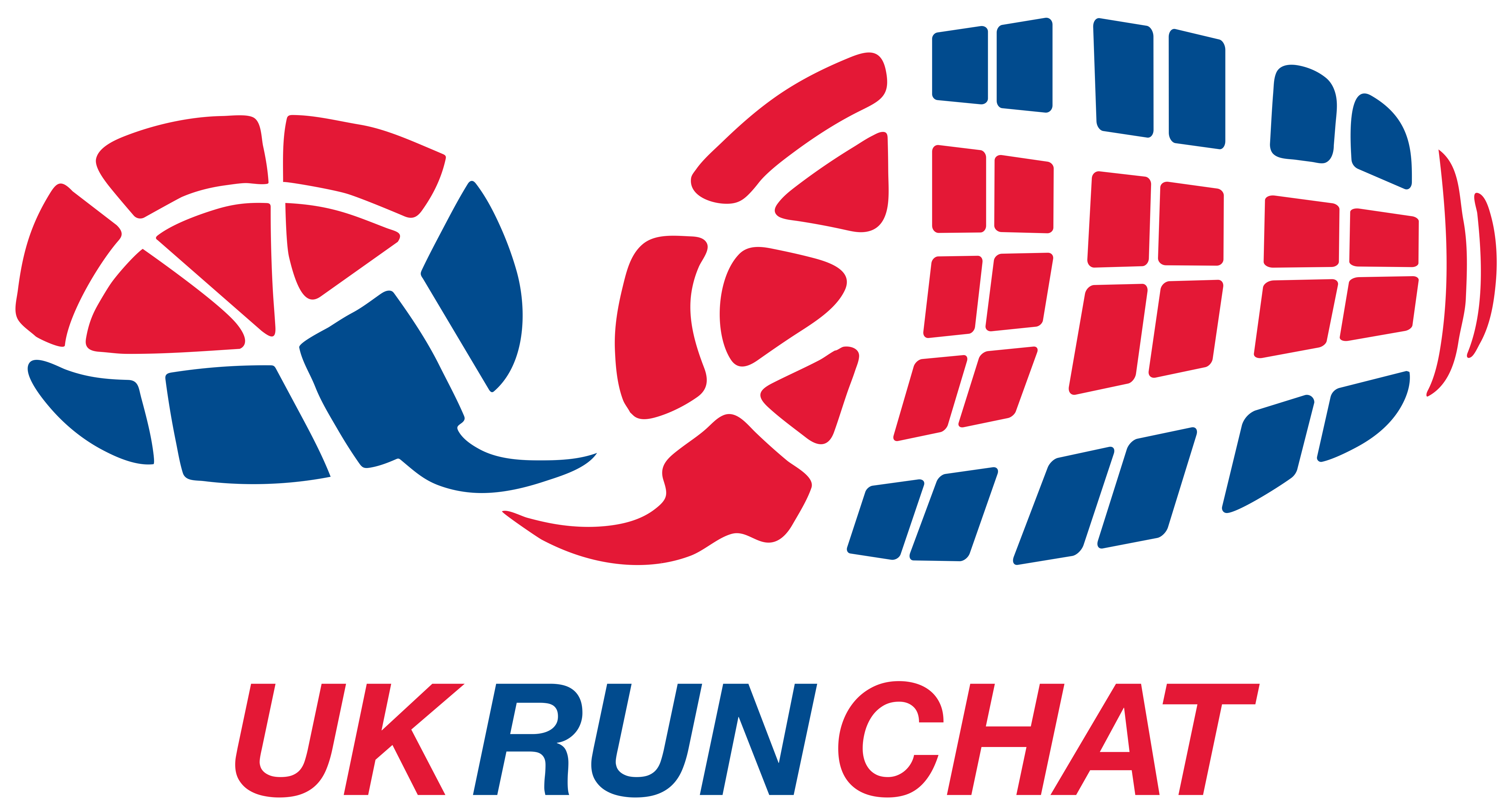Every runner and athlete, regardless of personal ability, standard or level of activity needs to be aware that in order to achieve their goals they have to allow their body to rest, repair and recover after hard training sessions or events. Without adequate rest, recovery, and nutrition – athletic performance and overall health will suffer. Yet despite its importance, it is often neglected by everyday and elite athletes alike, who tend to think that relentless training and constantly pushing themselves is the key to improving performance.
Of course high intensity training and pushing ourselves are important, however we need to think more about what we do in between those sessions. To quote Professor Stuart Phillips: “Training is just the beginning, all the good stuff happens in recovery.” Wise words from one of the most well respected names in nutrition research.
The process of recovery begins with adequate sleep and rest, however nutrition is a key component that is often under appreciated. The science behind sporting performance and recovery has been the subject of intense interest and research over recent decades and the majority of athletes are generally aware that consuming protein and carbohydrates are standard parts of many recovery regimes. However as research advances, it has become clear that we need to be look beyond the standard protein and carbohydrate only approach – we need to view recovery as an ongoing process and with a more holistic mindset.
The 3 R’s of Recovery
To achieve a more complete approach to recovery we must first understand the principles behind the process. It is well established in scientific literature that the process of recovery following exercise centralises around the 3 R’s of recovery – these are Repair, Refuel and Rehydrate.
Rehydrate
Rehydration is an easy starting place. It is simply taken care of through the replacement of fluid loss during exercise and by restoring electrolyte balance (1). This can be achieved fairly easily through standard hydration practices, however in cases of significant weight loss (through fluids) over the duration of an exercise bout, a more structured approach may be necessary.
Refuel
When looking at refuelling, it is well documented in research that high intensity activities require the utilization of our most effective fuel source – stored carbohydrate (glycogen). It is important to replenish these stores following exercise through the consumption of carbohydrates.
Repair
The repair element of recovery is initially facilitated by protein provision. Protein is not only important for the preservation and growth of lean body mass but also for endurance training recovery (2,3). Numerous studies have identified 20g of protein to be a large enough amount to sufficiently stimulate Muscle Protein Synthesis (MPS)(4,5).
One other factor to consider when looking at protein is the quality of the protein source itself. Whey protein is believed to be the premier post exercise option (6) as it contains all the essential amino acids, is readily digested and has a high leucine content which is considered to be the key amino acid for “triggering” MPS (7,8).
Addition of Omega-3
Whilst rehydration, replenishment of muscle glycogen and ingestion of protein is a great start to the recovery process, it does still leave some areas unaccounted for, namely the management of exercise induced inflammation. This is where ENHANCED RECOVERYTM goes beyond the normal and starts to stand out from the crowd.
The unique ENHANCED RECOVERYTM formula manages to address the foundations of recovery mentioned earlier through 20g protein and 25g Carbohydrate, as well as controlling exercise induced inflammation with the addition of 1600mg of high quality stabilised Omega-3s.
Omega-3 fatty acids, particularly with high EPA and DHA content, are not only essential for improved athletic performance but also have a positive impact on general health and immune function given their high anti-inflammatory properties (9,10). Regular consumption has been shown to reduce muscle damage and perceived muscle soreness, positively modify cardiovascular physiology (11,12) as well as improve mood state and cognitive function (13).
There also seems to be a benefit to using an emulsified formula when supplementing Omega-3. Emulsified formula’s, like ENHANCED RECOVERYTM, have been shown to be more readily absorbed by the cells in the body and subsequently incorporated into the cell membranes when compared with Omega-3 capsules (14). The incorporation of Omega-3 fatty acids into cell membranes is important as alters the structure of the membrane helping with the absorption of other nutrients.
Synergistic benefits
Another consideration is how Omega-3 is delivered. ENHANCED RECOVERYTM administers Omega-3’s alongside other nutrients known to aid muscle recovery, such as whey protein, instead of having them in isolation. These ingredients interact harmoniously with each other increasing their individual effectiveness; this is known as the synergistic benefit.
Research in rugby players and footballers has shown that the addition of Omega-3 to a protein and carbohydrate beverage reduces muscle soreness, markers of muscle damage and maintains explosive power to a greater degree than delivering protein and carbohydrates in isolation (15,16).
The combination of Omega-3 and protein has also been shown to reduce muscle protein breakdown in periods of rest or inactivity (17). This improves overall muscle protein balance when compared with protein consumption alone, helping to not only increase gains in lean muscle tissue, but to also heighten recovery from exercise by boosting muscle repair.
Adequate sleep and rest are vital to improving recovery and performance, but let’s not forget about nutrition, particularly in endurance events it can be the difference between a good athlete and a great one. ENHANCED RECOVERYTM is a true all rounder, building on the foundations of recovery ENHANCED RECOVERYTM goes above and beyond the standard protein shake with the addition of Omega-3, vitamins and high antioxidant capacity giving you a more complete recovery.
Finally to expand the earlier quote from Professor Stuart Phillips:
“Training is just the beginning, all the good stuff happens in recovery. With its one-of-a-kind blend of ingredients, don’t just recover, recover smarter with Enhanced Recovery.”
References
1. Kathryn L Beck, Jasmine S Thomson, Richard J Swift, Pamela R von Hurst. (2015) Role of nutrition in performance enhancement and post exercise recovery. Open Access J Sports Med. 6: 259–267.
2. Bishop, P.A., Jones, E. & Woods, A.K. (2008). Recovery from training: A brief review. Journal of Strength and Conditioning Research, 22, 1015–1024. 7.
3. Beelen, M., Burke LM, Gibala MJ, van Loon L JC. (2010). Nutritional strategies to promote post-exercise recovery. International Journal of Sport Nutrition and Exercise Metabolism, 20, 515–532. 11.
4. Moore, D. R., Churchward‐Venne, T. A., Witard, O., Breen, L., Burd, N. A., Tipton, K. D., and Phillips, S. M. (2015) Protein Ingestion to Stimulate Myofibrillar Protein Synthesis Requires Greater Relative Protein Intakes in Healthy Older Versus Younger Men. Journals of Gerontology Series a‐Biological Sciences and Medical Sciences 70, 57‐62 31.
5. Moore, D. R., Robinson, M. J., Fry, J. L., Tang, J. E., Glover, E. I., Wilkinson, S. B., Prior, T., Tarnopolsky, M. A., and Phillips, S. M. (2009) Ingested protein dose response of muscle and albumin protein synthesis after resistance exercise in young men. American Journal of Clinical Nutrition 89, 161‐168 32.
6. Phillips, S. M. (2016) The impact of protein quality on the promotion of resistance exercise‐induced changes in muscle mass. Nutr Metab (Lond) 13, 64.
7. Devries, M. C., McGlory, C., Bolster, D. R., Kamil, A., Rahn, M., Harkness, L., Baker, S. K., and Phillips, S. M. (2018) Protein leucine content is a determinant of shorter‐ and longer‐term muscle protein synthetic responses at rest and following resistance exercise in healthy older women: a randomized, controlled trial. Am J Clin Nutr 107, 217‐226.
8. Devries, M. C., McGlory, C., Bolster, D. R., Kamil, A., Rahn, M., Harkness, L., Baker, S. K., and Phillips, S. M. (2018) Leucine, Not Total Protein, Content of a Supplement Is the Primary Determinant of Muscle Protein Anabolic Responses in Healthy Older Women. J Nutr 148, 1088‐1095.
9. Andrade PMM, Ribeiro BG, Bozza MT, Costa Rosa LFB, do Carmo MGT. Effects of the fish-oil supplementation on the immune and inflammatory responses in elite swimmers. Prostaglandins Leukot Essent Fatty Acids 2007;77:139–45.
10. Shei, R.J., Lindley, M.R., & Mickleborough, T.D. (2014). Omega-3 polyunsaturated fatty acids in the optimization of physical performance. Military Medicine, 179(11, Suppl.) 144–156.
11. Herbst EAF, Paglialunga S, Gerling C, Whitfield J, Mukai K, Chabowski A, Heigenhauser GJF, Spriet LL, Holloway GP. Omega3 supplementation alters mitochondrial membrane composition and respiration kinetics in human skeletal muscle. J Physiol 2014;592:1341– 52.
12. Andersson A, Sjödin A, Hedman A, Olsson R, Vessby B. Fatty acid profile of skeletal muscle phospholipids in trained and untrained young men. Am J Physiol Endocrinol Metab 2000;279:E744–51.
13. Fontani G, Corradeschi F, Felici A, Alfatti F, Migliorini S, Lodi L. Cognitive and physiological effects of omega-3 polyunsaturated fatty acid supplementation in healthy subjects. Eur J Clin Invest 2005;35:691– 9.
14. Susan K.Raatz PhD, RDJ. Bruce Redmon MD, Nyra Wimmergren RN, James V.Donadio MD, Douglas M.Bibus PhD J. (2009) Enhanced Absorption of n-3 Fatty Acids from Emulsified Compared with Encapsulated Fish Oil Am Diet Assoc. 109(6):1076-81.
15. Black KE, Witard OC, Baker D, Healey P, Lewis V, Tavares F, Christensen S, Pease T, Smith B. Adding omega-3 fatty acids to a protein-based supplement during pre-season training results in reduced muscle soreness and the better maintenance of explosive power in professional Rugby Union players. Eur J Sport Sci 2018;18:1357–67.
16. Philpott JD, Donnelly C, Walshe IH, MacKinley EE, Dick J, Galloway SDR, Tipton KD, Witard OC. Adding fish oil to whey protein, leucine, and carbohydrate over a six-week supplementation period attenuates muscle soreness following eccentric exercise in competitive soccer players. Int J Sport Nutr Exerc Metab 2018;28:26–36.
17. Smith, G. I., Atherton, P., Reeds, D. N., Mohammed, B. S., Rankin, D., Rennie, M. J., and Mittendorfer, B. (2011) Dietary omega‐3 fatty acid supplementation increases the rate of muscle protein synthesis in older adults: a randomized controlled trial. Am J Clin Nutr 93, 402‐412.






